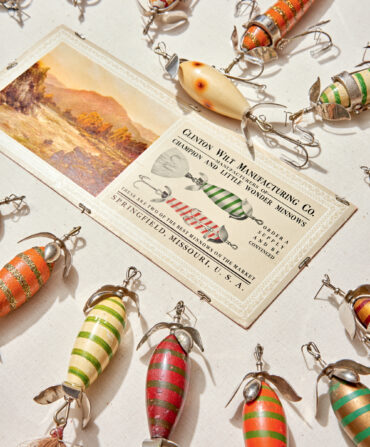Captain Benny Blanco left his house south of Miami at 5 a.m. Thursday, with his boat hitched up and his truck loaded down with a generator, cans of gas, water, non-perishable food, every saw he owned, and all the tools that would fit in the leftover space in between. He’d lost contact with his colleagues, Chris Wittman and Daniel Andrews, co-founders of Captains for Clean Water, as they were on search-and-rescue missions around Fort Myers, where they live and where the CFCW office is located. “Chris was running a boat and Daniel was in his truck, out there in the dark against their better judgment,” Blanco said. “They were pulling people out of trees and pulling them off their roofs.”
I talked to Benny on his mobile phone at 8 a.m. this morning. He’d already made the run from Miami to Fort Myers and back, and was returning with a truck full of supplies. In the frantic first hours of relief efforts, his plan was to get as much gear, gas, and emergency rations as he could to CFCW’s large network of guides—as they are the people often on the front lines of rescue. He described people wandering the streets in shock, “unable to comprehend what happened,” he said. “They don’t know where they are because their houses are gone, their neighborhoods are gone.” He saw bodies in the streets and floating in canals. He fought tears and stayed focused. With the CFCW office down and its staff scattered—several staffers lost their homes—he is working to manage the collection and transport of emergency goods from the less-battered east coast of Florida to the devasted regions around Fort Myers.

While Florida typically has its guard up with a hurricane on the way, Ian threw southwest Florida a curve ball. Most models showed the storm trending north and making landfall around Tampa or the Panhandle region, Blanco said. “Only one crazy spaghetti model had it coming through at Fort Myers.”
With a cohort of guides and others, Blanco has helped establish four supply drop-off sites on the east coast, and coordinate transport crews to get equipment, water, and food to the most hard-hit southwest Floridians. CFCW is working to establish a base of operations at Pine Island, which lost bridge access to the mainland. “There are a few high areas on the island that have some resilience in these storms, and that’s where some of our guides have gathered,” he reported. “We’re trying to get them a generator and water, but it’s so dangerous running a boat right after a storm given all the debris in the water. But that’s a next priority.”
There are some five thousand fishing guides in Florida, and hundreds operate out of the most impacted regions in southwest Florida. While guides are among the first to spring into action after a hurricane, “they are the last ones to ask for help,” Blanco says. Entities such as Bonefish & Tarpon Trust, International Game Fish Association, and Bass Pro Shops have a strong history of stepping up after major storms to aid the fishing community. Costa del Mar, YETI, and Patagonia have already reached out to partner with CFCW and other relief initiatives.
But for the next forty-eight hours, Blanco says, the emphasis is on collecting supplies on the east coast through drop-off centers, and building up capacity on the west coast. The needs are unfathomably great. Virtually no one in southwest Florida is untouched by the tragedy. Blanco hopes that getting guides on their feet—and in their boats and trucks—quickly can have a multiplier effect. “Guides are always the first boots on the ground after a hurricane,” he says. “We deal with chaos daily, and we know the water better than anyone. But there is no shortage of emergencies. They are literally on every block.”
For a list of agencies and organizations accepting donations for Hurricane Ian relief, go here. A link on the CFCW website will soon be posted for a guide-specific relief fund, based on a program instituted after Hurricane Irma.








